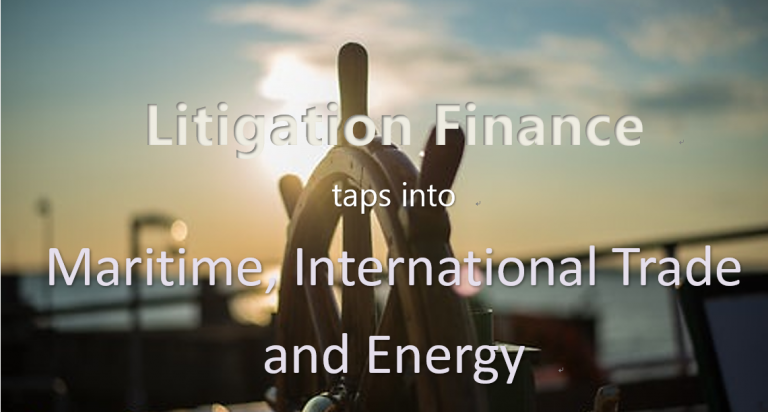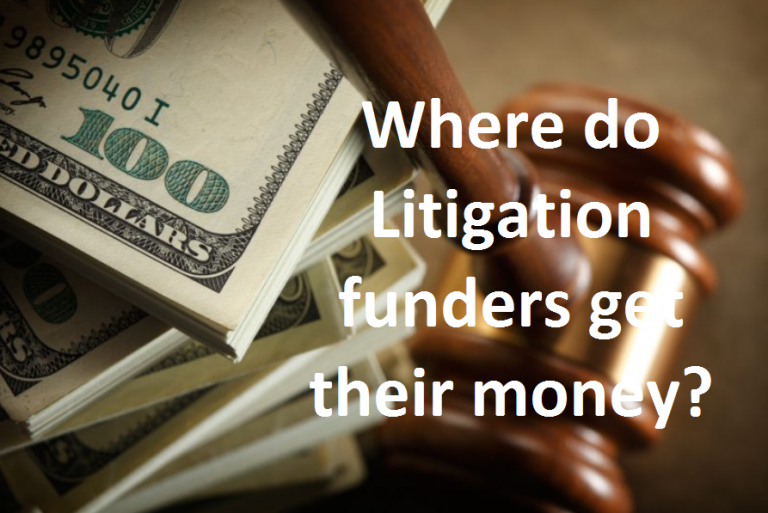LSR Services’ Tune-In: Law Firm Mergers
Industry Analysis Law firm Mergers VideosLitigation Finance taps into Maritime, International Trade and Energy
Company News Industry Analysis Litigation Litigation FundingMaritime, commodity and energy cases are certainly able to be serviced by the litigation funding sector. Litigation funders have already supported cases and have identified this sector as a specific one for growth. LSR sought out funders who have a specialized maritime law investment manager and found only one.
Simonie Dimitrellou, the investment manager and solicitor handling this sector for one of the leading funders, Augusta Ventures, kindly updated us on her increasingly busy schedule, the types of claims she’s getting involved with and who could most benefit from this new facility.
Funding is, for example, available for charterparty disputes where the client does not have P&I or FD&D cover. That scenario is often illustrated by an operator or charterer in a voyage charter claim. Other claims are myriad but include disputes over JVs, contracts, ship-management, bunkers, shipbuilding, yachts and superyachts, disputes with terminals, fraud and class action in the sector and general claims involving cargo, ships, commodities and insolvencies. On the energy side disputes over EPIC contracts, pipeline maintenance, field development agreements have already been supported. In addition, funding has been provided at different stages such as in the final stages of the claim process, including the enforcement of awards. Augusta provides funding for claims of all sizes.
We’re told that the process, benefits and reimbursements structure for a maritime or commodity case is no different from any other case. Funders provide funding for a portion or all of the costs of conducting a claim in return for a small share of the damages if the case is successful. Funding is non-recourse and available for all stages in the process – preparation, statements of case, mediation, arbitration, litigation and enforcement.
Simonie emphasized that funding provides an opportunity for Claimants to monetize claims without downside risk, it frees up cash flow for core operations and investment. It can also promote settlement as it often brings to the negotiating table uncooperative or difficult opponents.
“Prior to joining Augusta, Simonie worked in private practice at Ince & Co, P&I/FD&D insurance at Thomas Miller and the MECO group, in-house at an offshore energy company and at a maritime claims consultanccompany.” https://www.augustaventures.com/staff/simonie-dimitrellou/
LSR Services’ Tune-In- Litigation Funding
Company News Industry Analysis Litigation Litigation Funding VideosMaking legal departments into profit centres with the use of litigation funding? Should contingency fees be allowed in a lawsuit?
Industry Analysis Litigation Litigation FundingAs the litigation funding sector becomes more mainstream there have been a number of developments which illustrates its growing recognition and acceptance.
Amongst larger law firms and corporate clients there has been a realization that, far from a case by case basis for high cost / long term litigation, the sector can be used as leverage to grow. The access to working capital releases the law firm from its traditional monthly billing cycle required by equity partners reluctant to fund cases out of their own capital. Some law firms recognize that they can take more work on a contingency or other split risk basis, which helps them pick up business.
Corporates with regular flows of litigation cases are also making use of the portfolio potential on offer. In the previous post, we referred to the notion of making legal departments into “profit centres”.
Many still believe that “Lawyers can’t accept this type of finance, or work for a share of the award…” – it all depends!
Litigation funding has been championed in a number of jurisdictions, not least Australia which has been the driving force behind the sector up until now. USA and England & Wales are now committed to the concept, as is Canada. But what of the rest of the world and what’s the problem with it?
Litigation funding has existed in something of legal limbo in many common law jurisdictions, due to the concepts of Maintenance, Champerty and Barratry that impact on criminal laws and the law of tort.
In laymen’s terms maintenance is the concept of providing support to a third party to further a legal claim. Champerty is a form of maintenance whereby funds are provided to further a legal claim in return for a share of the proceeds. Barratry is the incitement or encouragement of a party to bring or continue a claim.
The reason why these concepts became outlawed hundreds of years ago is the very reason why they have been, and are being, overturned now – access to the law. They were outlawed because the rich and powerful were using the law to block-off, frustrate or assail the financially weaker side in an argument. This would restrict the legal system as a means of resolving disputes and use the law as a weapon to threaten coerce and generally undermining the public policy of trust in the law. Fast-forward to more recent times and it is the cost of the legal system itself that is restricting access.
Perhaps the most obvious example of where the criminalization of maintenance and champerty cannot be seen as anything other than restrictive to justice is in the field of insolvency. An insolvent company, by definition, has no money. It is therefore unable to pursue legitimate claims against third parties which, if judgement is found in its favour, would benefit the company and, by extension, the creditors. It is therefore no surprise that in England and Wales the concept of champerty was removed from insolvency cases first. In Hong Kong, where champerty is still a criminal matter, the concept of third-party funding has made in-roads in the insolvency sector already.
As for Asia – although not an exhaustive list, LSR’s research indicates that, under certain circumstances, a litigation funder’s services could be applied in China, South Korea and Japan. The UAE appears to have never had any restrictions and, as previously mentioned, both Singapore and Hong Kong are now allowing limited access in insolvency and international arbitration matters.
An Alternative investment for your hard earned savings- litigation!
Industry Analysis Litigation Litigation FundingCurrently there are three main areas where litigation funders source capital:
Private Equity / Finance: The bulk of litigation funders raise capital through the use of private investors. The funds can be raised via a general fund, for use as working investment capital or via Single Purpose Vehicles on a case by case basis. It is more often the case that investors wish to remain anonymous. However, certain new litigation funding companies attempt to trade on the “justice for the small guy” brand, connecting with young, tech-savvy clients and openly advertise their finance partners.
Stock-Market: Burford Capital Limited is the leading company in litigation funding. Its stock is listed on the London Stock Exchange’s AIM market. IMF Bentham Limited’s shares are listed on the Australian Securities Exchange. Both companies produce fully audited financial statements and regular stock-market announcements as part of their fiduciary obligations.
Fintech: It’s interesting to note that a relatively new industry has already evolved from being too “old-fashioned” in order to reduce costs and provide easier access to users and investors. At least one litigation funder uses online crowd-funding platform technology, inviting investments of US$ 1,000. Another has a more direct registration platform, seeking investments from as low as US$ 2,500.
With the appetite for alternative investment opportunities, investors are intrigued by the appealing litigation funding opportunity. According to the Wall Street Journal the current litigation market in the USA is valued at over US$ 200 billion. Of that, only an estimated US$ 3 billion is subject to litigation funding so, on the face of it, the scope of expansion is enormous.
However, with any “new”, rapidly growing sector, the potential for finger-pointing and suspicion will grow. Already the calls for more transparency about whether cases are being funded by third parties are growing. Currently the attitude of the courts is unclear. On the one hand there is the view that funding opens up the law to those previously shut out. On the other hand it could be seen as contributing to an even more litigious environment, especially in relation to Class Actions, which appears to be the battleground where these competing arguments are causing most friction.
The commercial threat for investors is the same for any industry – supply and demand and the threat from innovation and regulation.


